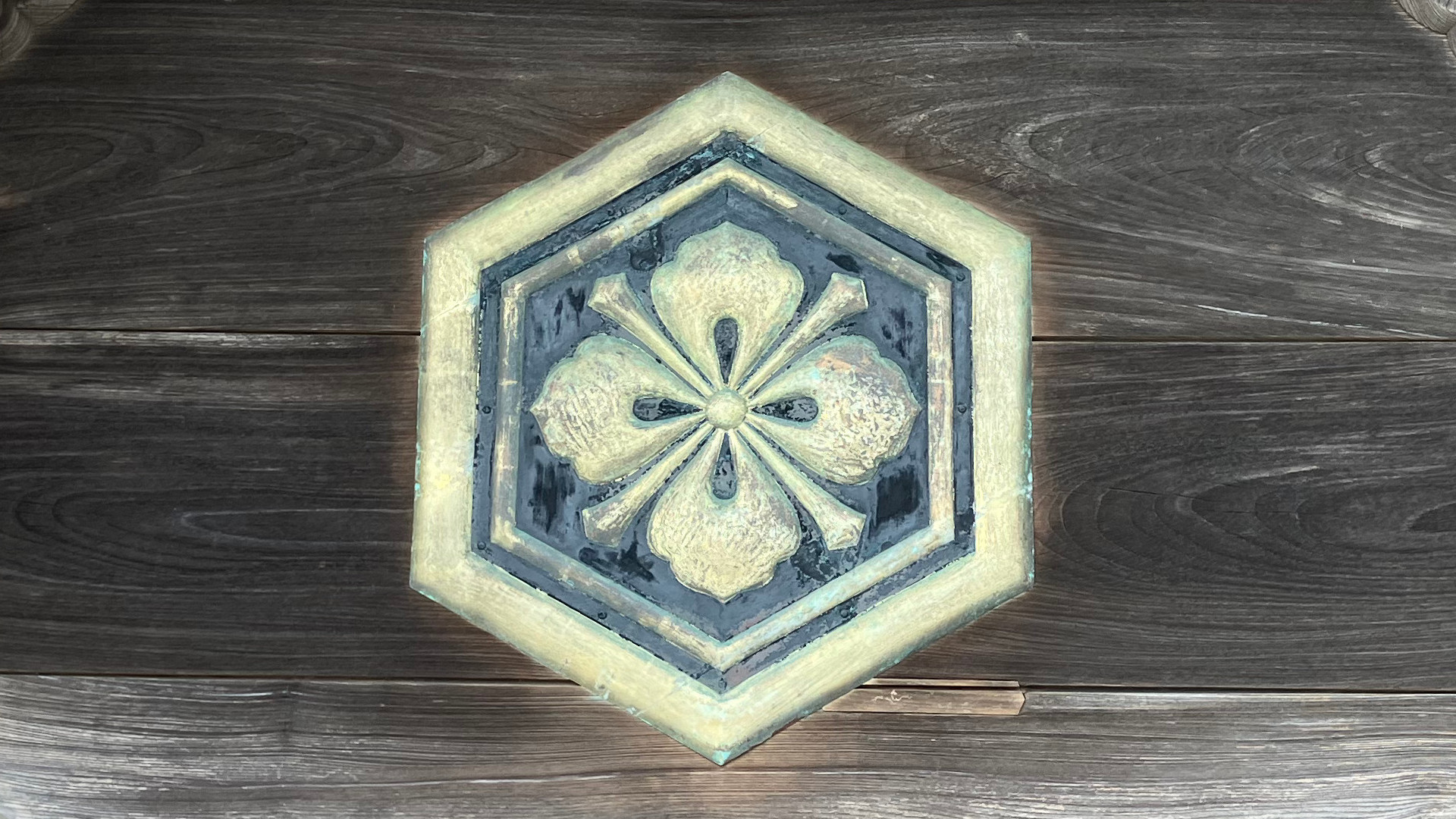
Japanese shrines typically have their own decorative crest, or shinmon. The design may reflect the shrine’s principal deity, the name of the region, or the family of chief priests. The flower-and-sword crest of Izumo Oyashiro Shrine was originally the family crest of the shrine’s chief priests, but was adopted as the official shrine crest sometime in the eighteenth or nineteenth century. Today, it adorns buildings throughout the shrine precincts and is also found on many of the amulets (omamori) sold at the shrine.
The inner motif of the Izumo Oyashiro crest is a flower with four petals divided by sword blades. It is enclosed in a double hexagon that resembles the pattern of ridges on a tortoise shell. The hexagon is meant to evoke a creature called the Genbu—a mythological being often depicted as a tortoise entwined with a snake. The Genbu is one of the four guardians of the cardinal directions in traditional Chinese cosmology and is believed to guard the north. The Genbu is associated with Izumo because of the shrine’s geographical location on the “northern” (Sea of Japan) coast. In addition, hexagons symbolize the six directions (four cardinal, plus up and down) of the universe. Because Okuninushi’s divine presence extends throughout the universe, the hexagon represents his omnipresent power.
Another theory is that the design of the crest symbolizes the three sacred treasures of the imperial household: sword, mirror, and comma-shaped bead. The sword blades, naturally, represent the sword; the hexagons are the mirror; and the flower petals represent the bead.

In an older version of the Izumo Oyashiro crest, there was no inner design of petals and swords. Instead, the hexagons enclosed the character “ari,” meaning “to exist” or “to be present.” This character signified the period during the tenth lunar month when the country’s deities gather at Izumo—that is, when the deities “are present.” For the rest of the country, this time is called the “month without gods” (kannazuki), but in Izumo, it is called the “month with gods” (kamiarizuki). The “ari” character was used to represent this distinction. Several examples of objects bearing this older crest are on display in the Homotsuden (treasure hall).
(This English-language text was created by the Japanese Tourism Agency.)
